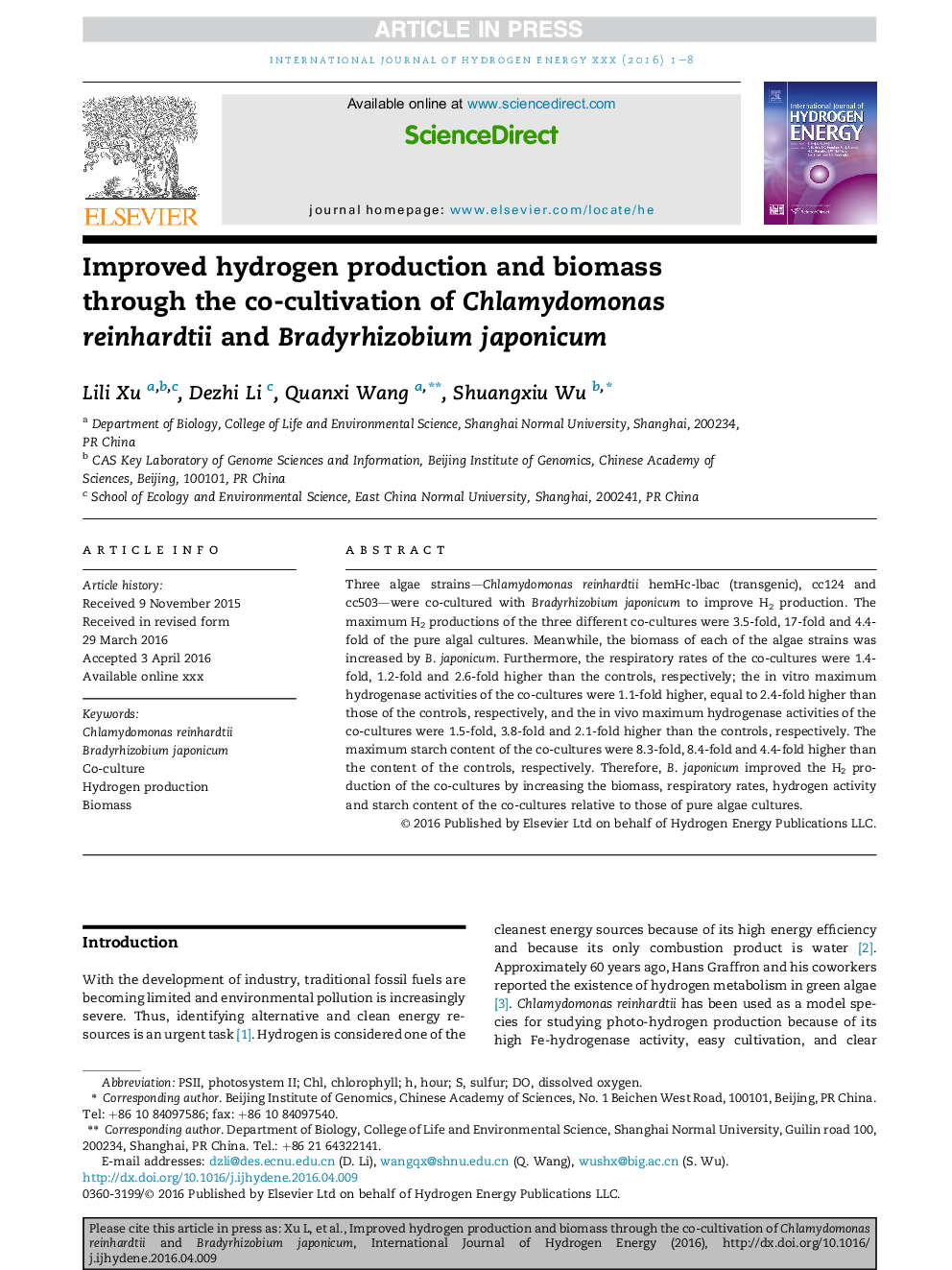| Article ID | Journal | Published Year | Pages | File Type |
|---|---|---|---|---|
| 7710423 | International Journal of Hydrogen Energy | 2016 | 8 Pages |
Abstract
Three algae strains-Chlamydomonas reinhardtii hemHc-lbac (transgenic), cc124 and cc503-were co-cultured with Bradyrhizobium japonicum to improve H2 production. The maximum H2 productions of the three different co-cultures were 3.5-fold, 17-fold and 4.4-fold of the pure algal cultures. Meanwhile, the biomass of each of the algae strains was increased by B. japonicum. Furthermore, the respiratory rates of the co-cultures were 1.4-fold, 1.2-fold and 2.6-fold higher than the controls, respectively; the in vitro maximum hydrogenase activities of the co-cultures were 1.1-fold higher, equal to 2.4-fold higher than those of the controls, respectively, and the in vivo maximum hydrogenase activities of the co-cultures were 1.5-fold, 3.8-fold and 2.1-fold higher than the controls, respectively. The maximum starch content of the co-cultures were 8.3-fold, 8.4-fold and 4.4-fold higher than the content of the controls, respectively. Therefore, B. japonicum improved the H2 production of the co-cultures by increasing the biomass, respiratory rates, hydrogen activity and starch content of the co-cultures relative to those of pure algae cultures.
Keywords
Related Topics
Physical Sciences and Engineering
Chemistry
Electrochemistry
Authors
Lili Xu, Dezhi Li, Quanxi Wang, Shuangxiu Wu,
